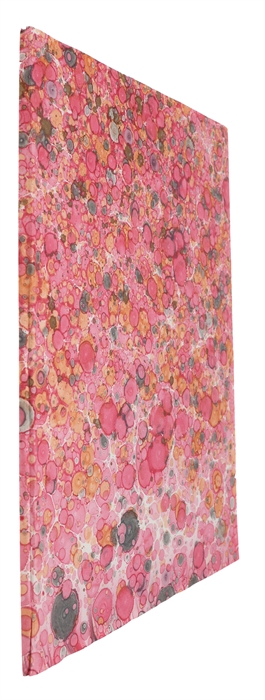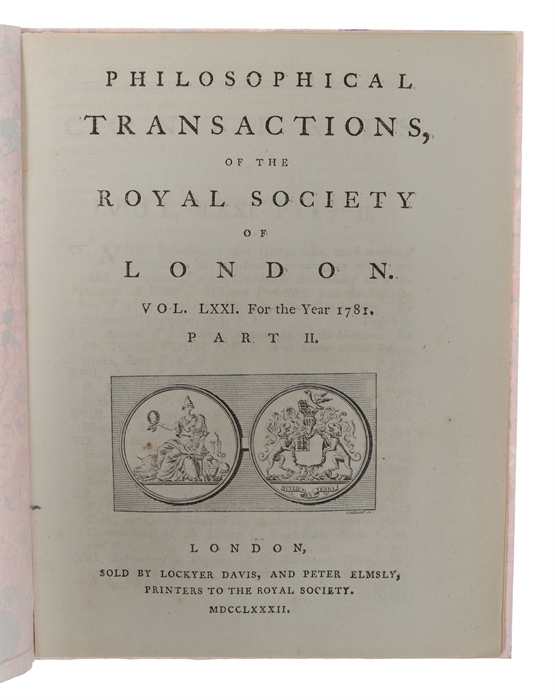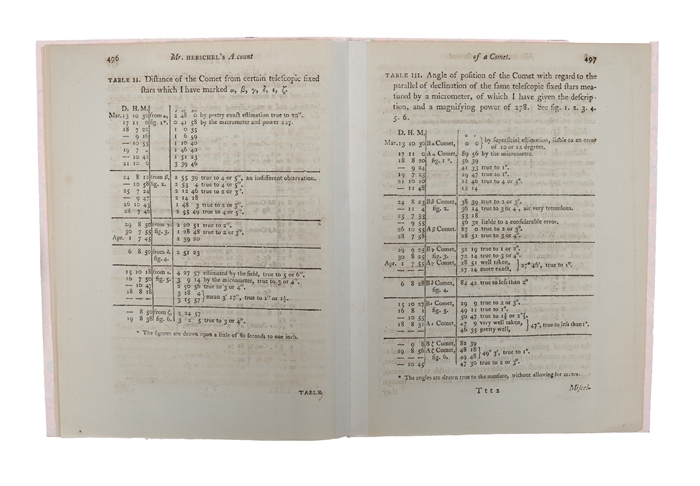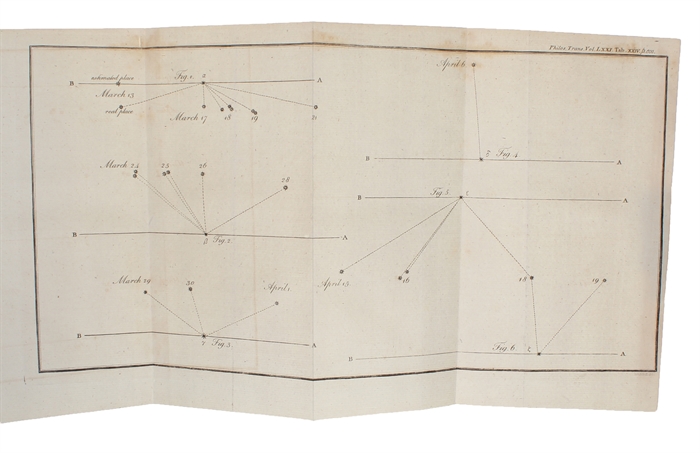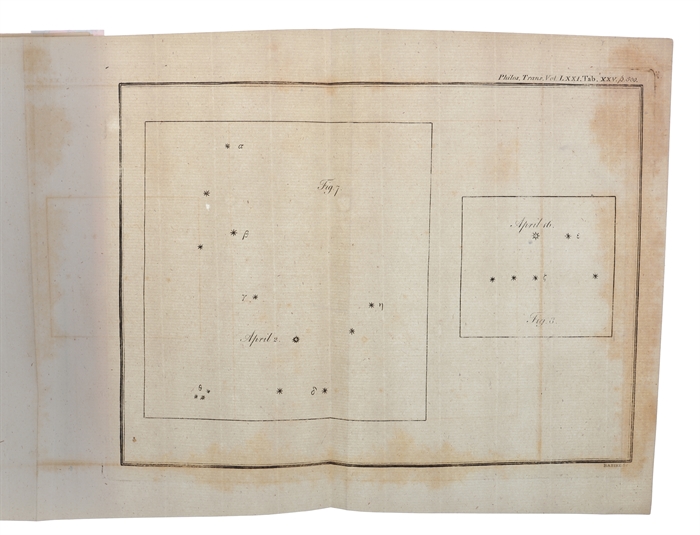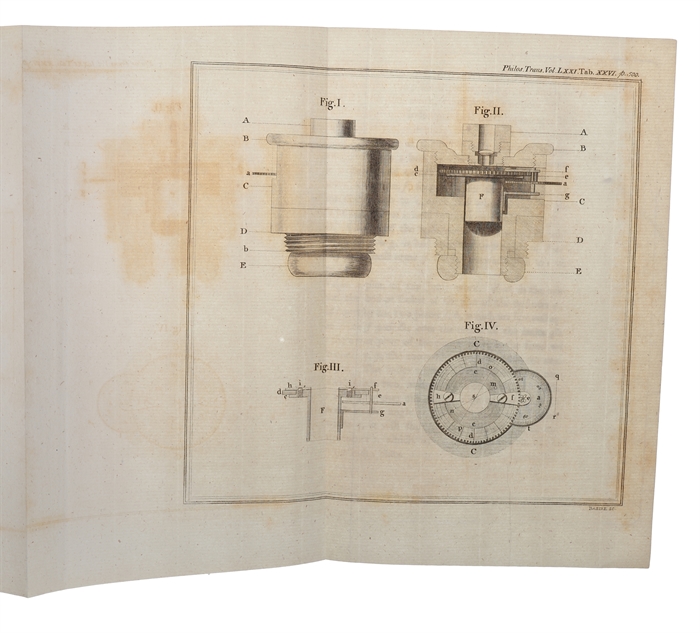THE DISCOVERY OF URANUS
HERSCHEL, WILLIAM.
Account of a Comet.
London, Lockyer Davis, and Peter Elmsly, 1782.
4to. In recent marbled paper wrappers. Extracted from "Philosophical Transactions", vol. 71, read April 26, 1781. Including title-page of volume. Leaves reinforced in margin. (2), V-VII, 492-501 pp. + three folded plates.
First edition of Herschel's seminal paper being the first recorded discovery of a new planet. Herschel's "discovery [was] unprecedented in human history. [...] Herschel's "new" planet demonstrated that there is much more to the universe - even to our tiny solar system - than the eye can discern on its own." (Lemonick, The Georgian Star).
British astronomer William Herschel commenced "his first review of the heavens, in which he examined stars down to the fourth magnitude. In August of that year he began a second review, more systematic and extensive than the first, and concentrated on the discovery of double stars" (Dictionary of Scientific Biography)
In March 1781, during his search for double stars, Herschel noticed an object appearing as a disk. Herschel originally thought it was a comet or a stellar disc, which he believed he might actually resolve. He reported the sighting to Nevil Maskelyne the Astronomer Royal. He made many more observations of it, and afterwards Russian Academician Anders Lexell computed the orbit and found it to be probably planetary.
Herschel agreed, determining that it must be a planet beyond the orbit of Saturn. He called the new planet the "Georgian star" (Georgium sidus) after King George III, which also brought him favour; the name did not hold. In France, where reference to the British king was to be avoided if possible, the planet was known as "Herschel" until the name "Uranus" was universally adopted. The same year, Herschel was awarded the Copley Medal and elected a Fellow of the Royal Society. In 1782, he was appointed "The King's Astronomer" (not to be confused with the Astronomer Royal).
Dibner 13
Sparrow 157
Norman 1058.
Order-nr.: 56995

